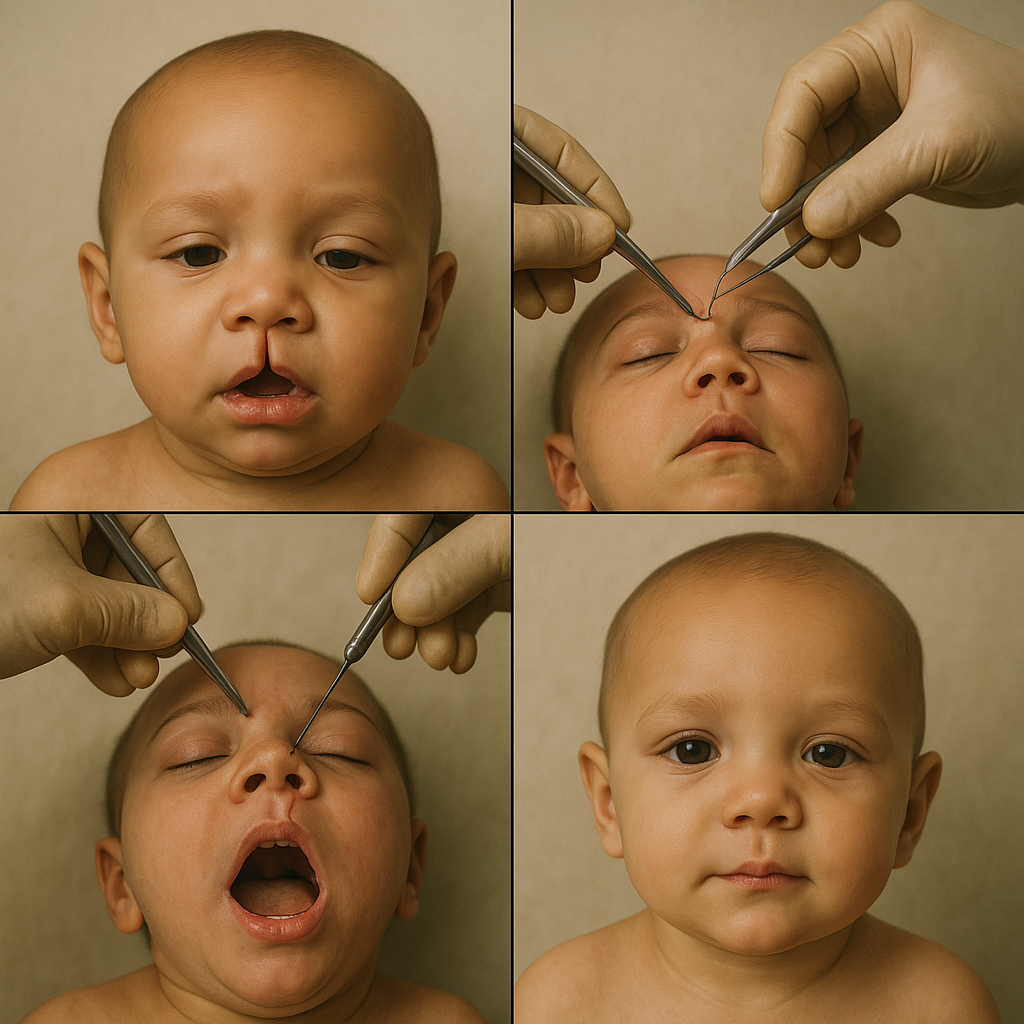Surgeries for cleft lip & palate

Surgeries for cleft lip & palate: Restoring Form and Function After Injury
Surgeries for cleft lip and palate aim to correct the congenital deformities that occur when the tissue that forms the roof of the mouth (palate) or the lip fails to fuse properly during fetal development. These surgeries are typically performed by a team of specialists, including plastic surgeons, oral surgeons, otolaryngologists (ENT), and speech therapists, and are tailored to the individual needs of each patient. Here are the main surgical procedures involved
Key aspects of Surgeries for cleft lip & palate: include

Cleft Lip Repair
This surgery is usually performed when the baby is around 3 to 6 months old. The surgeon will carefully reposition and suture the tissues to close the gap in the lip, restoring a more normal appearance. The goal is to achieve symmetry, improve lip function, and minimize scarring.

Cleft Palate Repair
This surgery is typically done when the child is around 9 to 18 months old, or sometimes later depending on the individual case. The surgeon will close the gap in the palate, reconstructing the roof of the mouth to improve feeding, speech development, and dental health. Techniques may involve tissue rearrangement, tissue grafting, or a combination of both to achieve optimal results.

Orthognathic Surgery
In some cases, additional surgery may be needed during adolescence to correct jaw alignment issues that can arise due to cleft palate. Orthognathic surgery aims to improve the alignment of the upper and lower jaws, enhancing facial symmetry, bite function, and aesthetics.

Revision Surgeries
Additional procedures may be required over time to address issues such as scar revision, nasal deformities, or speech difficulties. These revisions aim to further optimize function and appearance as the child grows and develops.

Speech Therapy
Alongside surgical interventions, speech therapy plays a crucial role in helping children with cleft lip and palate develop proper speech patterns and communication skills.

Improved Nutrition and Feeding Techniques
Newborns with cleft lip and palate may face difficulties with feeding. Special techniques and feeding bottles are used to ensure that infants get the proper nutrition.

Influence on Long-Term Self-Confidence
Early surgical interventions and speech therapy can have a profound impact on a child’s self-confidence and social integration as they grow older.
Surgeries for cleft lip & palate: – Restore Confidence & Function include
Start your recovery today and take the first step toward improved speech, feeding, and self-esteem!
Why Choose Us
Precise Aesthetics
Advanced Techniques
Tailored Results
Ethical Care
Reconstruction Expert
Globally Trained

Our Seamless Process

Consultation
We listen to your needs, concerns, and expectations to create a personalised treatment approach.

Personalised Plan
A plan designed just for you, focusing on the best results for your condition and goals.

Recovery Support
Comprehensive aftercare to ensure a smooth healing process with ongoing expert guidance.
What Our Clients Say
